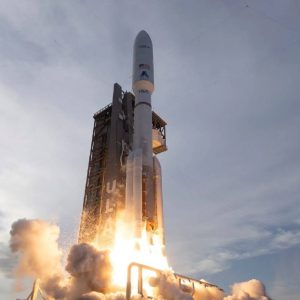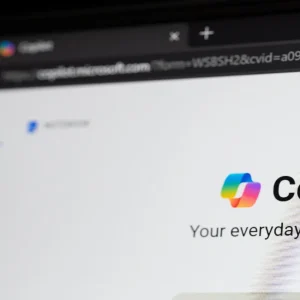
Chief information officer and SVP of IT at Norwegian energy multinational Equinor, Åshild Hanne Larsen, has called on technology leaders to better engage and collaborate with HR colleagues on “future of work” initiatives as digital and economic disruption continue to shape “how we work and the way we live our lives”.
Hanne Larsen was speaking at Tech Monitor publisher New Statesman Media Group’s Virtual CIO Symposium, discussing the $65bn revenue company’s data-driven digital agenda, and how a new C-suite axis of CIOs and HR leaders needed to mature for organisations to realise their transformation ambitions.
With operations in oil and gas, wind and solar, Equinor is a state-owned company previously known as Statoil until a rebranding in 2018. The company was recognised in Tech Monitor‘s Technology Leaders Index as a data and cloud pioneer, while the organisation has made significant strategic investments in emerging technologies such as augmented reality, robotics, internet of things and digital twins in its heavy industry operations.
Hanne Larsen started at the company as an offshore catering assistant on the Gullfaks B oil platform in the North Sea in the mid-1990s, and has held roles in downstream IT, leadership development, and has a decade of experience in executive positions within HR.
She said that while lines of communication with finance chiefs and chief operating officers were more established “traditional” relationships for technology execs, the CIO and HR axis was an emerging combination which would truly transform an organisation.
“When I was appointed I came from ten years of executive positions in HR, and to put it mildly I was not seen as the obvious choice for CIO,” she said.
“My observation is that the gap between IT, HR and other functions is really closing because data, technology and people are just becoming more integrated. Having experienced several of these areas it makes it easier to connect the dots and drive several aspects of the transformation journey, because technology choices always have an impact on people, how we work and how we live our lives.”
Diversity and the future of work
In particular, Hanne Larsen noted future of work initiatives and developing the diversity of technology functions as two of the biggest areas where CIOs could benefit from working with dynamic HR leaders.
“Diversity is one of the areas where technology units and IT can collaborate with HR, to have the right focus and the right team set up, because technology is shaping work and our lives,” she said.
“That means that the solutions that are developed will fail if they don’t take into account the diverse societies that we live in.
“And it’s very natural given the situation we’re in, but the future of work is a key area I think for IT, HR and facilities management; because it’s going to be more than the physical bricks of the workplace because most of us will end up in some sort of hybrid situation where some are in the office, some are at home and others are working from elsewhere.
“Connecting the dots between the bricks and the buildings, and the bytes in the technologies which support this and the people, is going to be critical because it cannot be resolved in isolation.
“So I really recommend if you haven’t done it already, reach out to your HR and facilities management colleagues to look at how you can shape a strategy and use this opportunity now to really get going on that.”
Hanne Larsen added that the CIO was also “at least partly accountable” for developing the digital capabilities and competencies of an organisation, and with the Equinor HR function had established a Digital Academy to reskill and upskill staff in IT and beyond.
Equinor CIO on responding to Covid-19
While coping with the disruption caused by the coronavirus pandemic, Hanne Larsen said that as a company Equinor had taken a giant leap forward in 2020 when it came to digital skills and using digital tools.
With technology and the IT function having played such a critical role in the company’s response, the CIO said that perception of the technology department continued to improve.
“We were already quite far along on the journey from IT being seen as a back-office cost centre, to our leadership really understanding that IT is an integrated part of current operations, but also the entire foundation for our improvement,” she said.
With investment in technology increasing, even while the energy company makes cuts in other areas, Hanne Larsen said that recent months had cemented the function’s perception as having “stepped out into the limelight as a real enabler of business value”.
Omnia data platform
Cliches aside, data really is the new oil for the energy company as Hanne Larsen described the company’s data strategy.
The Omnia data platform was an ambition for a cloud-based hub to unlock value from all of the organisation’s data which radiated as a project from the IT function back in 2015 and 2016, Hanne Larsen said.
Up-and-running for more than three years, it has now grown beyond a pure data platform in the cloud with new tools and features added to the extent it is firmly established as a platform to realise data availability, compute and storage across Equinor.
“From our perspective we’re really proud of the journey, but also proud of the foresight that we demonstrated in designing this and also having it in production before the establishment of our digital roadmap,” she said. “Because all the projects in our digital roadmap depend on data to succeed and deliver on our transformation.”
Sustainability
Equinor continues its offshore oil and gas exploration business, but is reducing its staff, spending and operations in this area broadly in line with global industry trends.
With a goal to be carbon zero by 2050, in October 2020 Equinor signed a Memorandum of Understanding with Microsoft to explore ways to support the Northern Lights carbon capture and storage project as a technology partner. The goal is to develop digital technologies to remove carbon from Microsoft’s operations as it strives to meet its goal to be carbon negative by 2030.
Indeed, Equinor has a deep strategic partnership with Microsoft and was integral to the tech giant expanding its cloud offering in Europe by locating new data centre regions in Norway. It is hoped Microsoft’s investment in the region will provide a significant dividend to the country’s technology and digital ecosystem.
Technology radar
Equinor’s strategy comprises three pillars: always safe, high value and low carbon – and the CIO said that horizon-scanning for the latest technology innovations was always focused on these areas.
“We have a radar of what technologies we think will bring the biggest potential for Equinor,” she said. “And as we are a process-heavy industry in many ways, it’s mostly centred around technology that can help us innovate within areas such as remote operations – for we typically look at AR, VR and Edge Computing.
“Secondly we look at autonomous systems, looking at closed-loop RTML [real-time machine learning] – and we look a lot at condition-based maintenance doing prediction and prescription on equipment using AI and machine learning.
With a large logistics operation, the CIO also said that 3D printing, blockchain and robotic process automation were part of the Equinor technology radar, but that there was no silver bullet to magically resolve the company’s challenges.
“It’s much about how we are using a suite of technologies to drive towards those outcomes,” she said. “And sometimes we see the value emerging from the interfaces between these technologies, or even more from the interfaces between technology and our people.”






